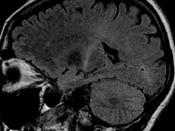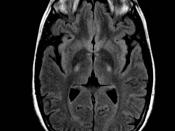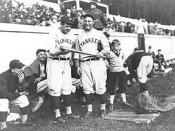The Fatal Disease: Amyotrophic Lateral Sclerosis
Amyotrophic Lateral Sclerosis (ALS) is a progressive incurable neuromuscular disease that attacks nerve cells and pathways in the brain and spinal cord. Motor neurons, among the largest of all nerve cells, reach from the brain to the spinal cord to muscles throughout the body with connections to the brain. When they die, as with ALS, the ability of the brain to start and control muscle movement dies with them. With all voluntary muscle action affected, patients in the later stages are totally paralyzed. In most cases, mental faculties are not affected.
There are three classifications of ALS. The most common form in the United States is known as "sporadic" ALS. It may affect a person at any given time. 90 - 95 percent of all cases are sporadic. "Familial" ALS suggests the disease is inherited, although no hereditary pattern is known to exist in the majority of ALS cases.
Only about 5-10 percent cases, are said to be genetic or inherited factor. In those families, there is a 50 percent chance the offspring will have the disease. "Guamanian" is the type of ALS that was observed and linked to Guam and the Trust Territories of the Pacific in the 1950s during World War II.
ALS can also be defined as "Lou Gehrig's Disease". In the United States, ALS is often referred to that title because of New York Yankees' baseball star Lou Gehrig, who was diagnosed with ALS in the 1930s. Other famous individuals with the serious illness were Hall of Fame baseball pitcher Jim "Catfish" Hunter, Sesame Street creator Jon Stone, actor David Niven, boxing champ Ezzard Charles, pro football player Glenn Montgomery and New York Senator Jacob Javits.
It may take several months to know for sure that someone has ALS. The...


